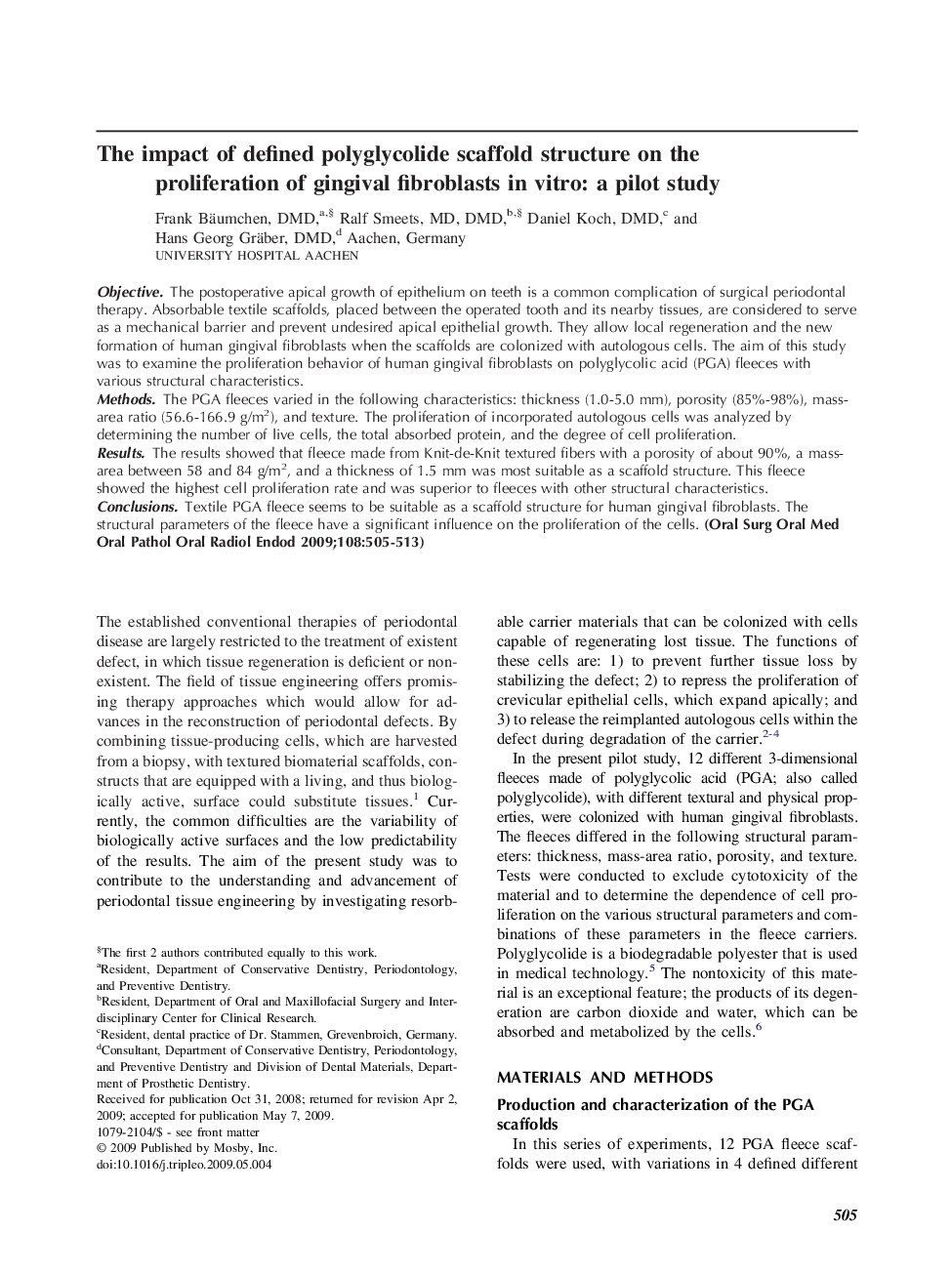| Article ID | Journal | Published Year | Pages | File Type |
|---|---|---|---|---|
| 3167882 | Oral Surgery, Oral Medicine, Oral Pathology, Oral Radiology, and Endodontology | 2009 | 9 Pages |
ObjectiveThe postoperative apical growth of epithelium on teeth is a common complication of surgical periodontal therapy. Absorbable textile scaffolds, placed between the operated tooth and its nearby tissues, are considered to serve as a mechanical barrier and prevent undesired apical epithelial growth. They allow local regeneration and the new formation of human gingival fibroblasts when the scaffolds are colonized with autologous cells. The aim of this study was to examine the proliferation behavior of human gingival fibroblasts on polyglycolic acid (PGA) fleeces with various structural characteristics.MethodsThe PGA fleeces varied in the following characteristics: thickness (1.0-5.0 mm), porosity (85%-98%), mass-area ratio (56.6-166.9 g/m2), and texture. The proliferation of incorporated autologous cells was analyzed by determining the number of live cells, the total absorbed protein, and the degree of cell proliferation.ResultsThe results showed that fleece made from Knit-de-Knit textured fibers with a porosity of about 90%, a mass-area between 58 and 84 g/m2, and a thickness of 1.5 mm was most suitable as a scaffold structure. This fleece showed the highest cell proliferation rate and was superior to fleeces with other structural characteristics.ConclusionsTextile PGA fleece seems to be suitable as a scaffold structure for human gingival fibroblasts. The structural parameters of the fleece have a significant influence on the proliferation of the cells.
